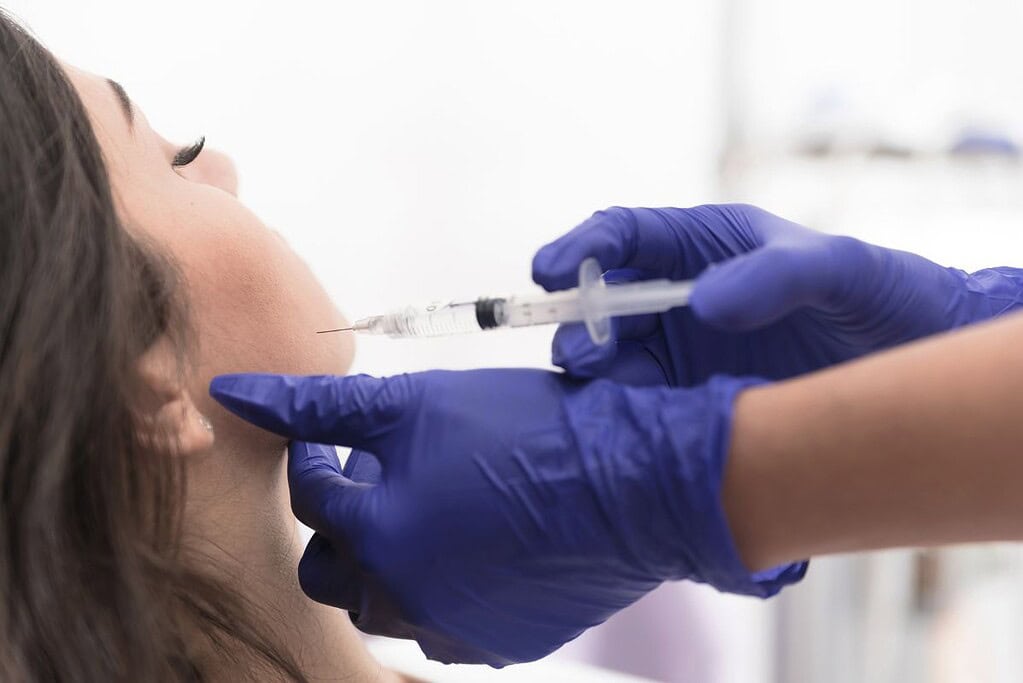A well-defined jawline is often associated with youth attractiveness and confidence. However not everyone is naturally blessed with sharp jawline contours and aging can also soften the definition over time. Fortunately jawline filler treatments have become a popular non-surgical way to achieve a more sculpted and balanced face shape.
In this comprehensive guide we will explore everything you need to know about jawline fillers from how they work and their benefits to the costs results and potential risks. Whether you are considering treatment for the first time or comparing it with other cosmetic procedures this article will give you a complete overview.
What is Jawline Filler?
Jawline filler is a cosmetic procedure that uses injectable dermal fillers to add structure volume and definition to the jawline area. Unlike surgical implants jawline filler is minimally invasive performed in a clinic setting and typically requires little to no downtime.
How Jawline Filler Works
Dermal fillers usually made of hyaluronic acid (HA) or calcium hydroxylapatite (CaHA) are injected strategically along the jawline. The filler provides immediate volume enhancing the natural bone structure and creating sharper definition. In addition HA fillers can stimulate hydration in the skin while CaHA fillers stimulate collagen production for longer-lasting improvements.
Types of Fillers Used for Jawline Contouring
The most commonly used fillers for jawline contouring include:
- Hyaluronic Acid (HA) Fillers
Popular brands: Juvederm, Restylane, Belotero.
These are reversible, natural-looking, and ideal for patients who want flexibility. - Calcium Hydroxylapatite (CaHA) Fillers
Popular brand: Radiesse.
These fillers provide firmer support and can stimulate collagen production, making them suitable for stronger jawline definition. - Poly-L-lactic Acid Fillers
Brand: Sculptra.
These work gradually by stimulating collagen growth, offering subtle but long-lasting enhancement.


Benefits of Jawline Filler
Jawline filler treatments are highly customizable allowing both men and women to achieve a balanced and harmonious profile. Here are the main benefits
Enhancing Facial Contours
- Creates a sharper and more youthful jawline.
- Balances proportions between the lower face and other features.
- Reduces the appearance of sagging skin or jowls.
Non-Surgical Alternative to Jawline Surgery
Unlike surgical implants or facelifts jawline filler offers
- Immediate results with no surgical scars.
- Minimal downtime most patients return to daily activities the same day.
- Adjustability fillers can be reversed or modified if needed.
Jawline Filler for Men vs Women
- For Men: Filler can enhance masculinity by creating a stronger, squared jawline that conveys confidence.
- For Women: Filler can refine the jawline for a softer, elegant contour while maintaining femininity.
This flexibility makes jawline filler one of the most versatile cosmetic treatments available.
How Much Does Jawline Filler Cost?
The price of jawline filler varies depending on factors such as the clinic location, practitioner expertise, and the type and amount of filler used.
Average Price Range
- Thailand & Asia: THB 15,000 – 40,000 per session
- United States: USD 700 – 2,500 per syringe
- Europe: EUR 600 – 2,000 per syringe
Most patients require 2–4 syringes for optimal results, though this depends on individual facial structure.
Comparing Jawline Filler vs Other Treatments
- Jawline Surgery (Implants): Permanent but invasive, requiring anesthesia and weeks of recovery.
- Thread Lifts: Lift sagging skin but don’t add structural definition like fillers do.
- Botox for Masseter Reduction: Slims the lower face but does not sharpen the jawline.
Jawline filler remains the most balanced option for those seeking immediate, natural-looking enhancement without surgery.
Jawline Filler Before and After Results
Before treatment, patients may have a softer or undefined jawline often due to genetics weight changes or aging. After filler injections, the jawline typically appears
- Straighter and more defined.
- Balanced with the chin and cheeks.
- More youthful, reducing the look of jowls or sagging.
High-quality clinics often provide before-and-after galleries to help patients visualize realistic results. Always review these before committing to treatment.
How Long Does Jawline Filler Last?
The longevity of jawline filler depends on the type of filler used metabolism and lifestyle factors
- Hyaluronic Acid Fillers: 12–18 months
- Calcium Hydroxylapatite Fillers: 18–24 months
- Poly-L-lactic Acid Fillers: Up to 2 years
Touch-up treatments are recommended to maintain the contour over time.
Risks and Side Effects of Jawline Filler
Like any medical procedure jawline fillers carry potential risks. Choosing an experienced provider significantly reduces complications.
Common Side Effects
- Mild swelling, redness, or bruising at injection sites
- Temporary tenderness or firmness
- Minor asymmetry (usually resolves as swelling subsides)
Rare but Serious Complications
- Infection at the injection site
- Vascular occlusion (filler blocking a blood vessel)
- Nerve injury or prolonged numbness
These risks highlight the importance of selecting a licensed and skilled injector.
How to Minimize Risks
- Choose a certified aesthetic clinic with medical supervision.
- Ensure the practitioner uses FDA-approved fillers.
- Follow all aftercare instructions such as avoiding strenuous exercise alcohol and heat exposure for 24–48 hours.
See more details : siamclinicphuket



